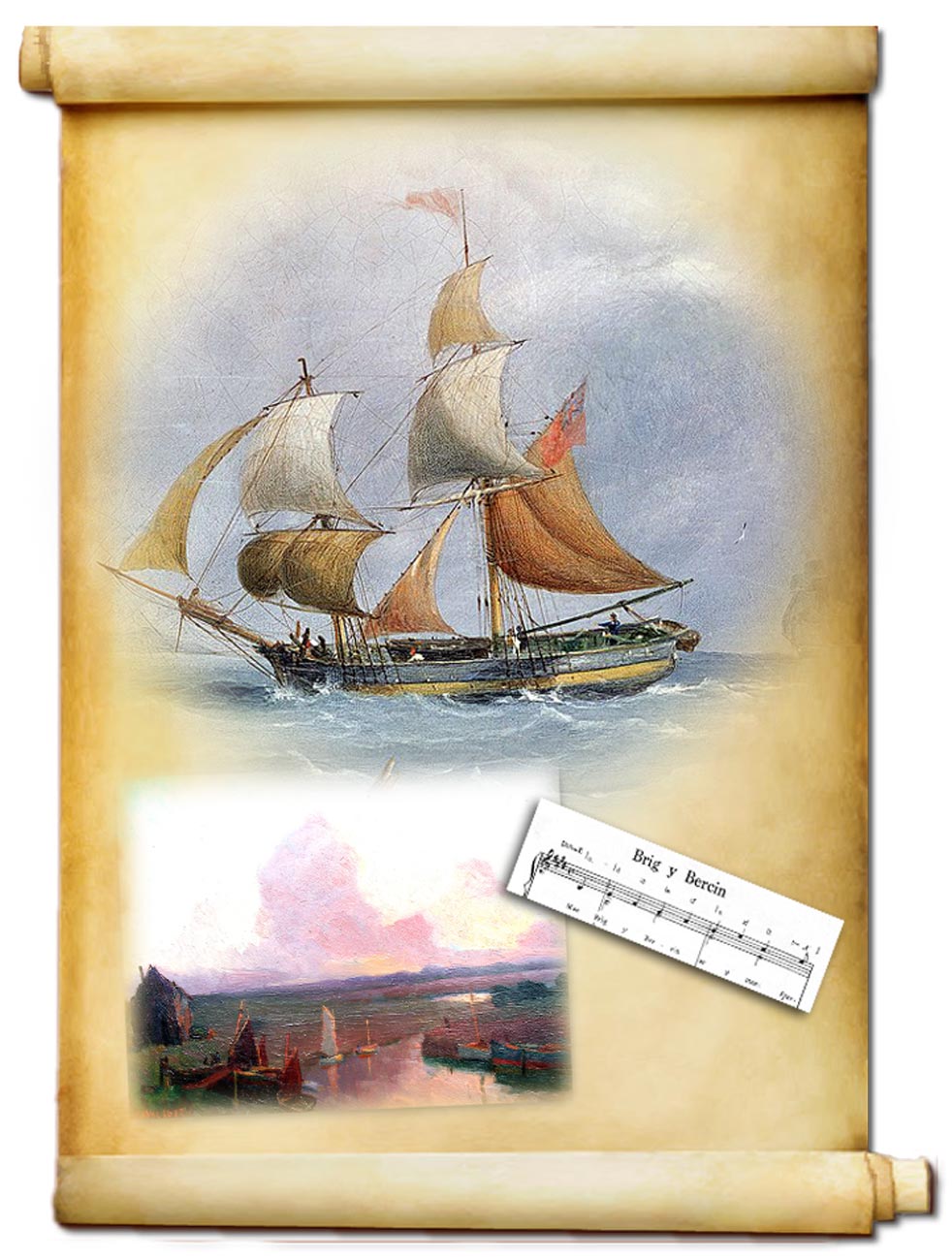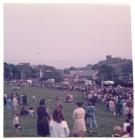Content can be downloaded for non-commercial purposes, such as for personal use or in educational resources.
For commercial purposes please contact the copyright holder directly.
Read more about the The Creative Archive Licence.
Description
Criccieth – The Abercin brig.
In olden days Llŷn and Eifionydd was an isolated district with poor communication by land with the outside world. There was traffic by sea though by small one-masted sloops and smacks carrying 20 to 80 tons of cargo and passengers. These little ships, with a crew of two or three, were built at, and served, any river mouth, creek or inlet all around the coast; even open beaches (2). In his book “Hen Longau Sir Gaernarfon” (1953) David Thomas lists that between 1776 and 1827, twelve were built at Criccieth and ten at the River Dwyfor and Abercin, two miles to the west (1). One ship, the ABERKYN (sic), stands out as being 100 tons and rigged as a “brig”. This is a two masted ship with square sails. She would have had a bigger crew and sailed to foreign places. John Glyn Davies, the collector and composer of sea songs for children (“Fflat Huw Puw” etc.) wrote that the ship was commemorated in a few stanzas and composed the song “BRIG Y BERCIN”© .
“ Ffarwel Santander wlad yr haf,
Mae’r Brig yn rowlio braf.
Rhaid setio’r royals at y gwynt:
Wel haliwch bawb, awn adre’n gynt”.
The existence of the ABERKYN can be confirmed in Lloyd’s Register of Shipping. The first entry is in 1789 when she is recorded as being a brig of 100 tons, Captain is Griffith Owen and owner R. Owen. Local historian Colin Gresham writes that the tenant at Abercin Farm at this time was a family named Owen. Another author, Henry Hughes who wrote the classic book about Porthmadog Ships “Immortal Sails”, notes that she was in St Petersburg, Russia, in 1795. This is probably true as she is recorded in Lloyd’s Register as trading to Sweden in the Baltic. The last entry is 1897
and then she disappears from history. Perhaps she was wrecked or even taken by the French as we were at war with them at the time and several local ships were captured.
Fig 1. Painting of a typical brig of the period by Joseph Walter (1783-1856) and the painting of the estuary of the River Dwyfor is by William Cadwalader (1879-1962).
Fig 2. Painting of small smack unloading limestones at Afonwen near Criccieth by R.D.Cadwalader.








Do you have information to add to this item? Please leave a comment
Comments (0)
You must be logged in to leave a comment